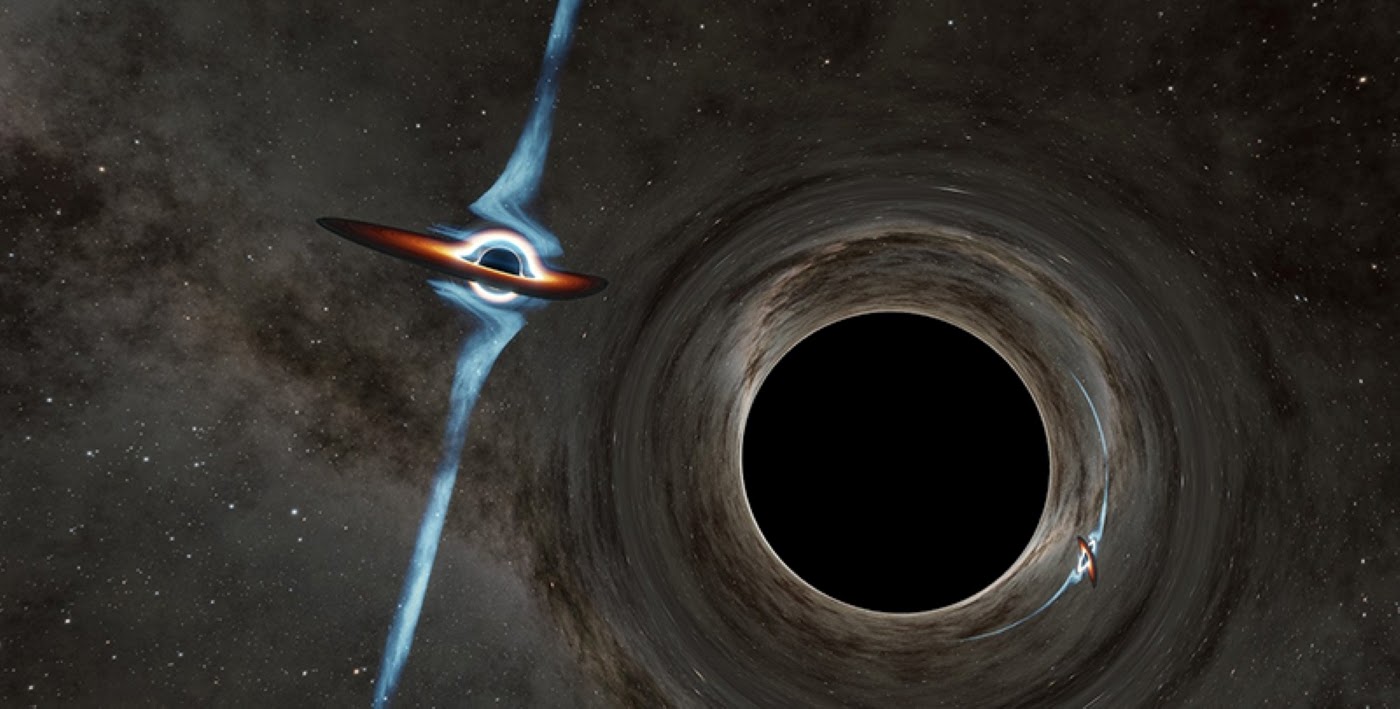Until recently, one of the closest orbiting each other pairs of supermassive blackholes was found in NGC 7727. That pair is about 89 million light-years away from Earth. Those black holes are only 1,600 light-years apart from each other. Another pair in OJ 287, about 3.5 billion light-years from Earth, are only separated by about 0.3 light years. Now scientists have discovered a pair orbiting each other at a distance of 200 AU to 2,000 AU apart, about 0.003 to 0.03 light years.
The pair is designated PKS 2131-021 and is a blazar, a quasar whose relativistic jet points in the direction of Earth. It is located 8.8 billion light-years away. The pair orbit each other about every two years. The black holes orbit each other so closely that they should merge in around 10,000 years. When this happens, the fabric of space will ripple in the form of gravitational waves and oscillations in matter will occur.
Supermassive black holes are found at the heart of most galaxies, and when a pair are found it shows that the galaxy underwent a merger. SMBHs are massive and can range from hundreds of thousands to ten billion solar masses. PKS 2131-021 contains two black holes, each estimated to be a few hundred million times the mass of the sun. Since SMBHs are so massive, it has been theorized that they form from the collision of at least two smaller black holes during galaxies merging. This discovery will help give scientists some understanding of how this happens. One of the black holes is shooting out a jet of gas into space and has been observed with radio telescopes as part of a study by researchers at Caltech in Pasadena over an 11-year period, from 2008 to 2019.

This quasar’s brightness varies regularly and this has been attributed to it being in a binary system with another black hole. The oscillations happen as they orbit each other, dimming then brightening when the black hole is moving towards us. In order to verify that this wasn’t a random event, the researchers at Caltech sifted through data taken at two other observatories, the University of Michigan Radio Observatory with data from 1980-2012 and the Haystack Observatory’s data taken from 1975-1983. This data matched their predictions of how the quasar’s brightness should have changed. There was a 20-year period when the pattern disappeared, starting in 1984. This may have been due to a change in the material feeding the black hole. It then started again and has been going for another 17 years regularly. In order to confirm their data, the team will attempt to observe gravitational waves being generated by the binary black holes.
Observations of the gravitational waves of this and other binary pairs will help scientists figure out the final parsec problem. It has been theorized that two black holes will never get closer than one parsec (~3.26 light-years) due to the loss of material and energy exchange between the two. According to the theory, they will slow down and time will stretch for them to where they will never collide. It would seem that OJ 287, and now PKS 2131-021, go against that. As we learn more from each observation we make, we will know what to look for in other candidate systems. These observations will go a long way in our complete understanding of this amazing Universe we live in.
More:

